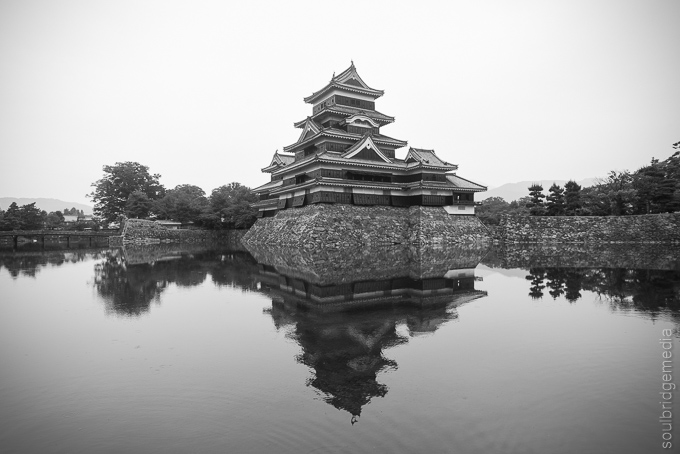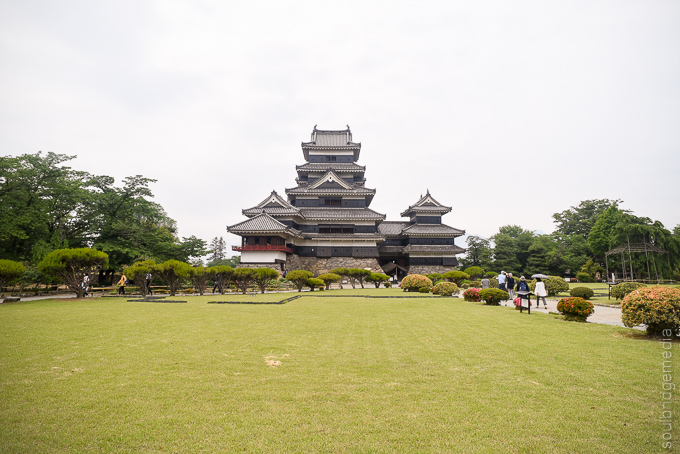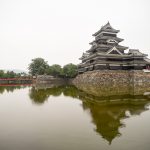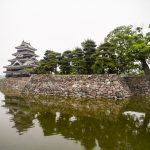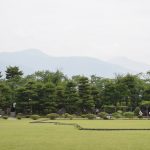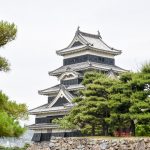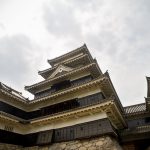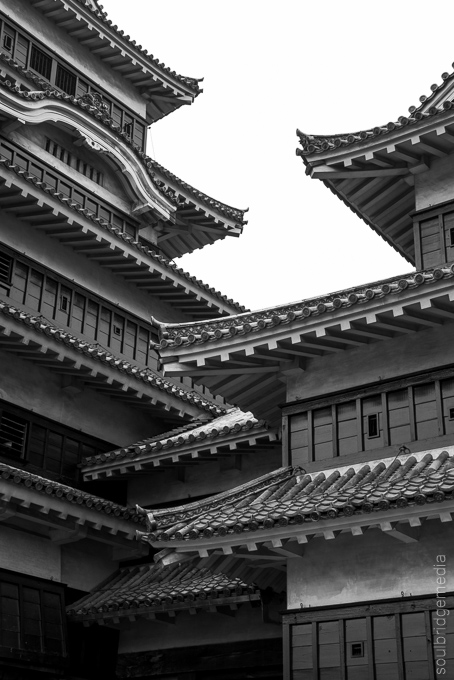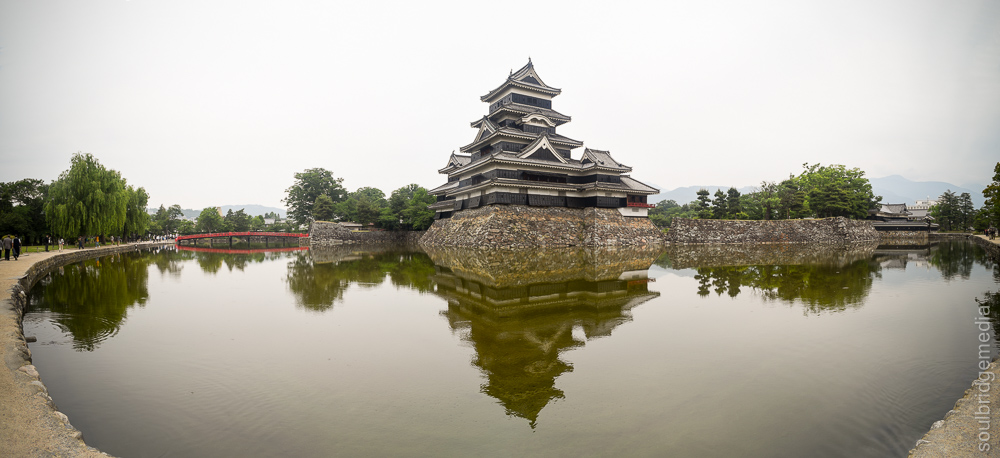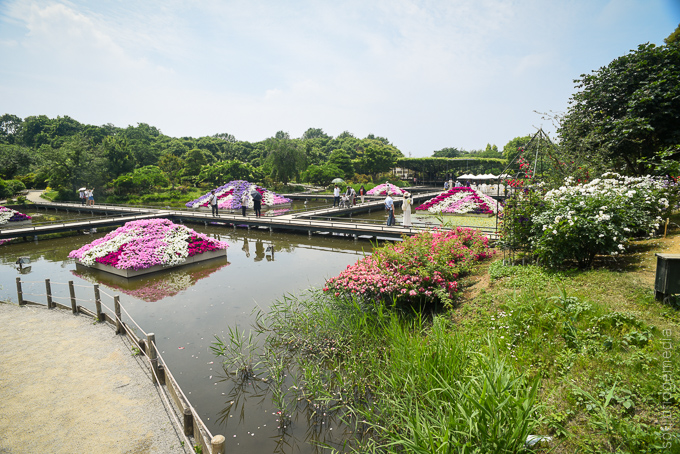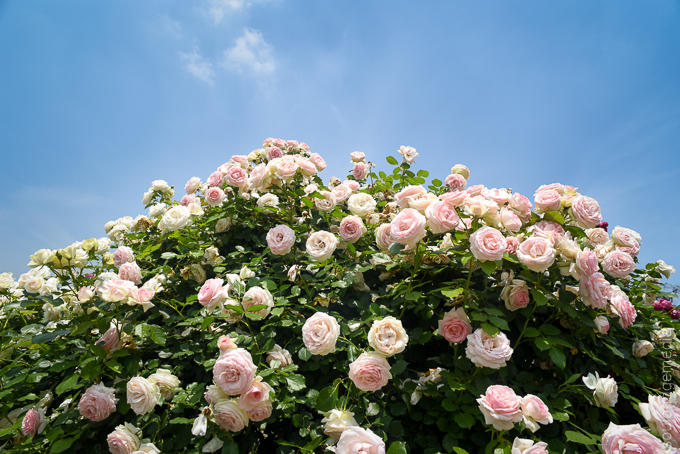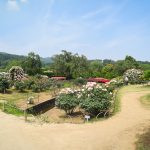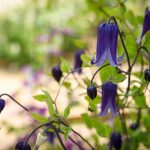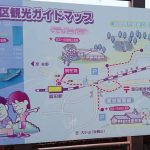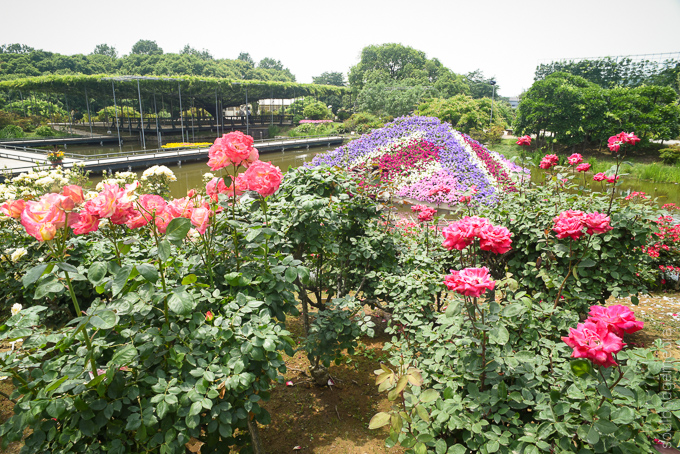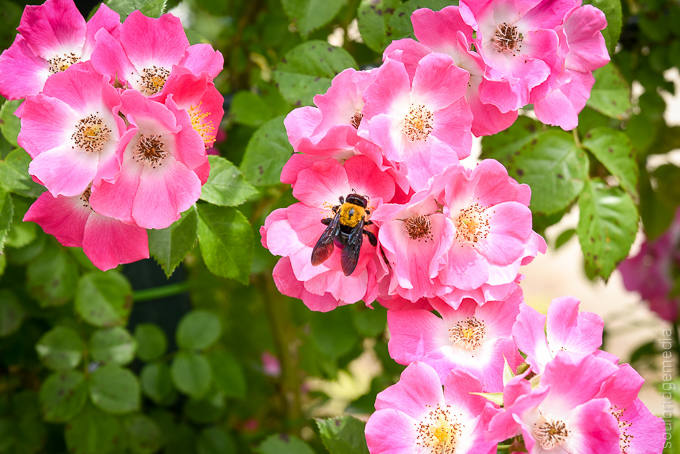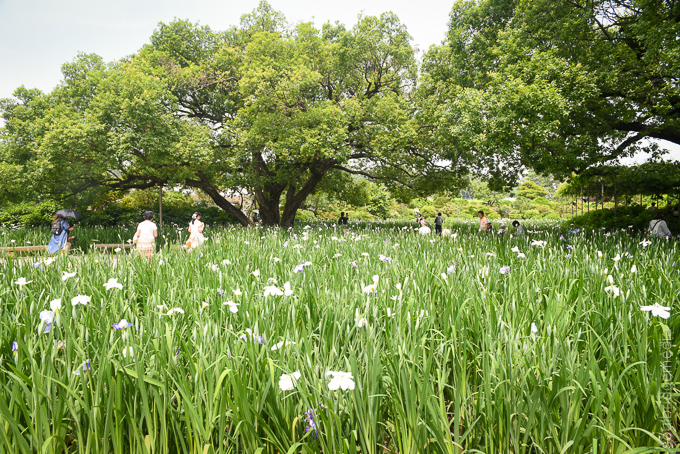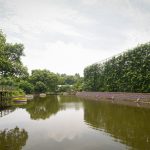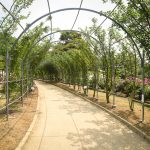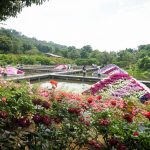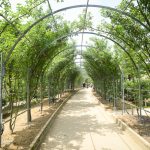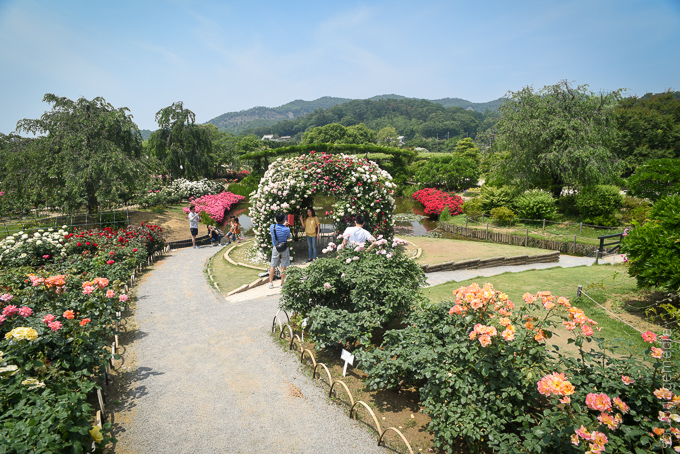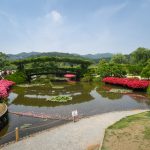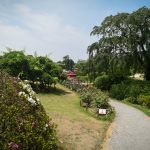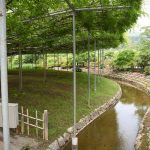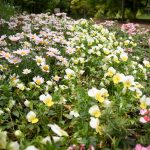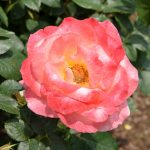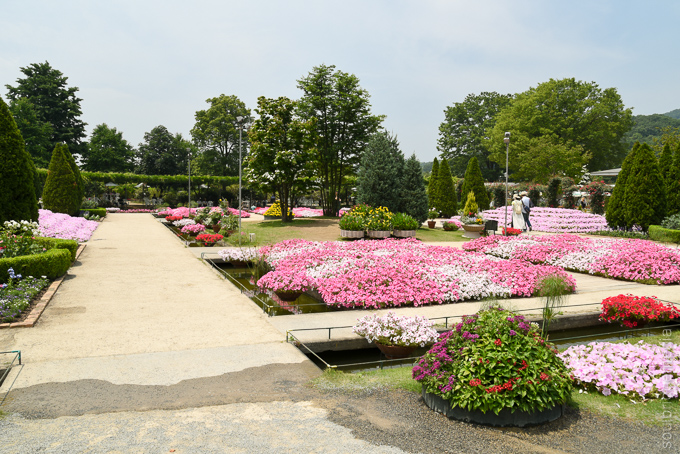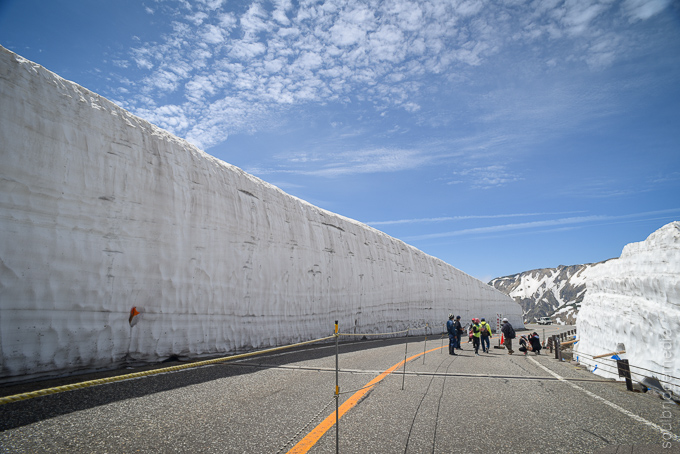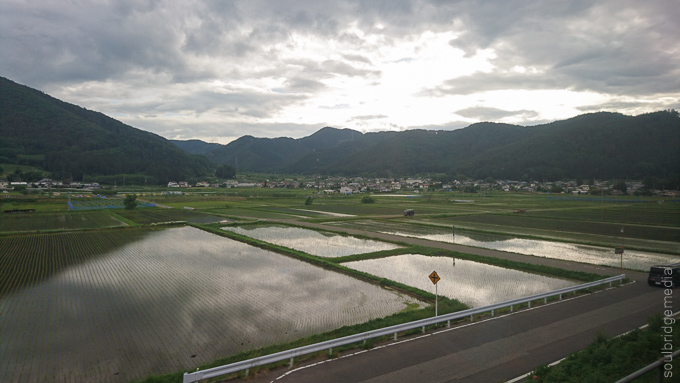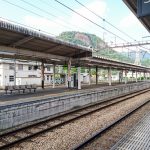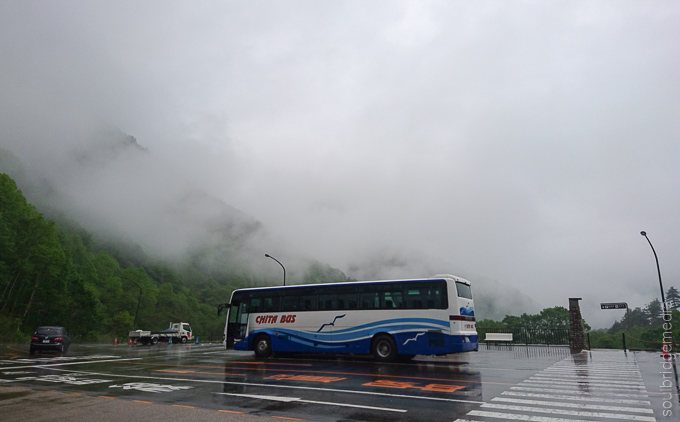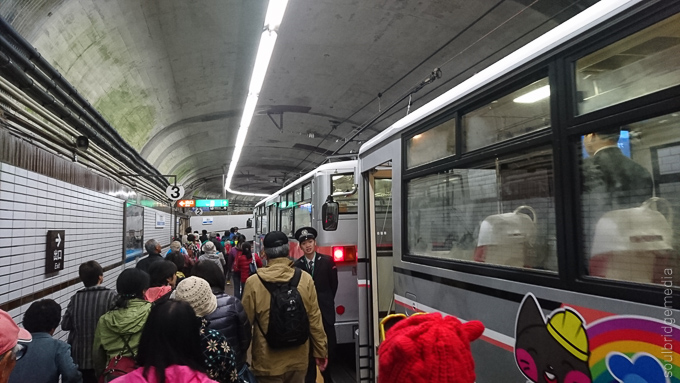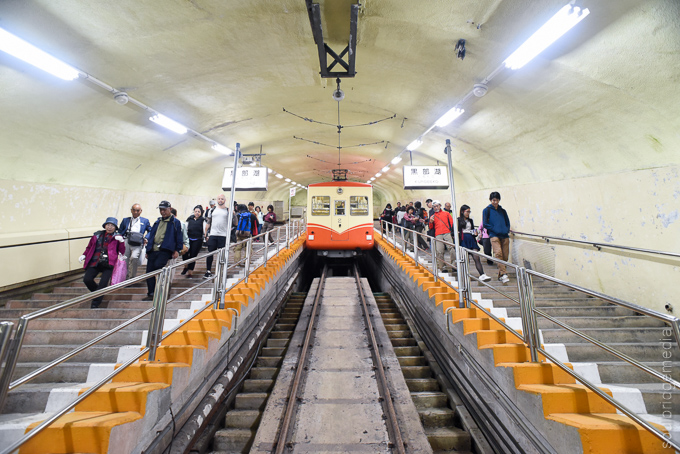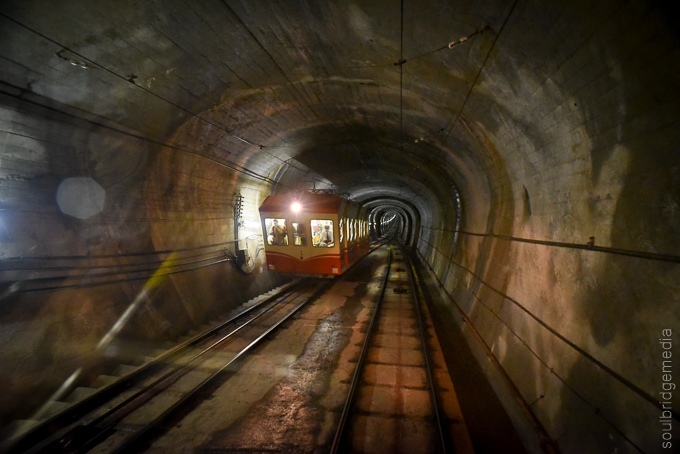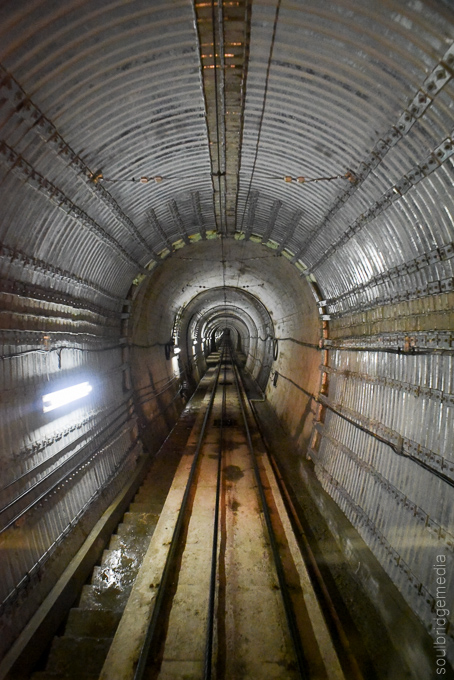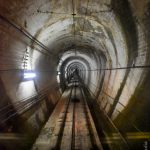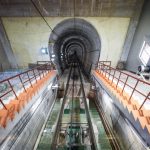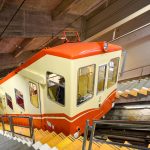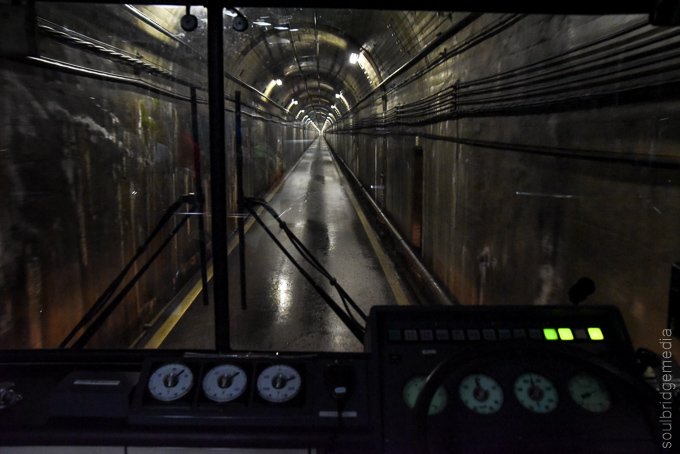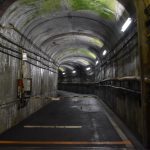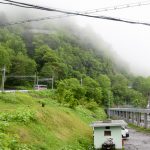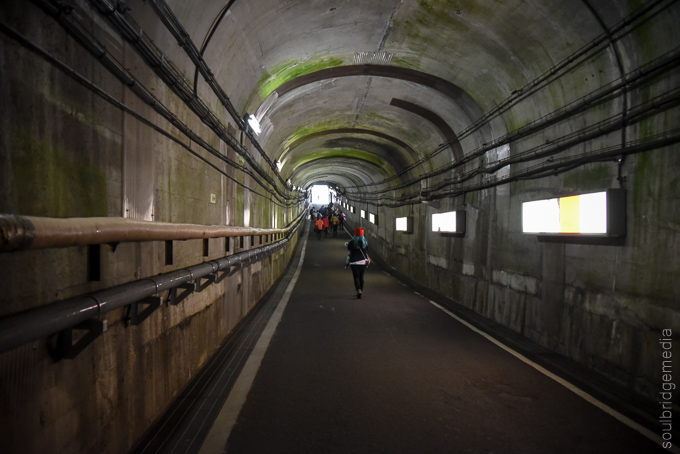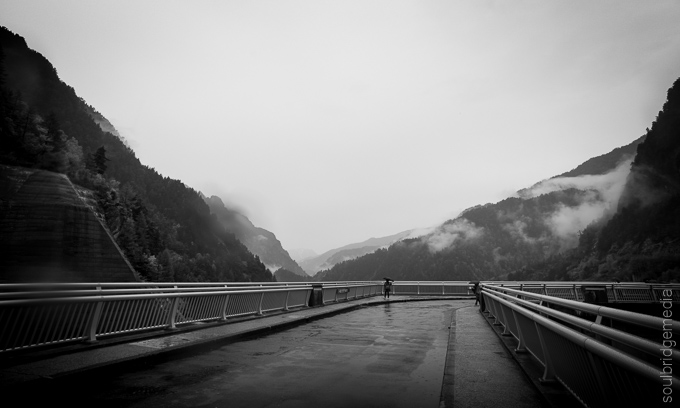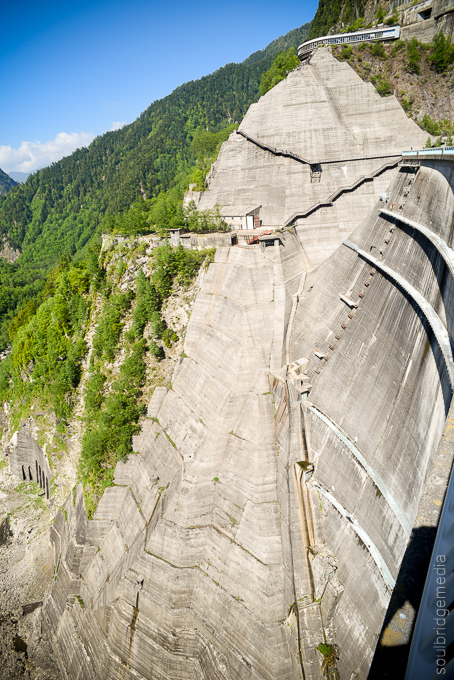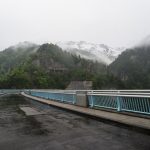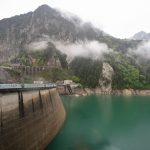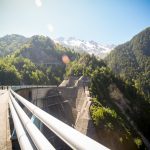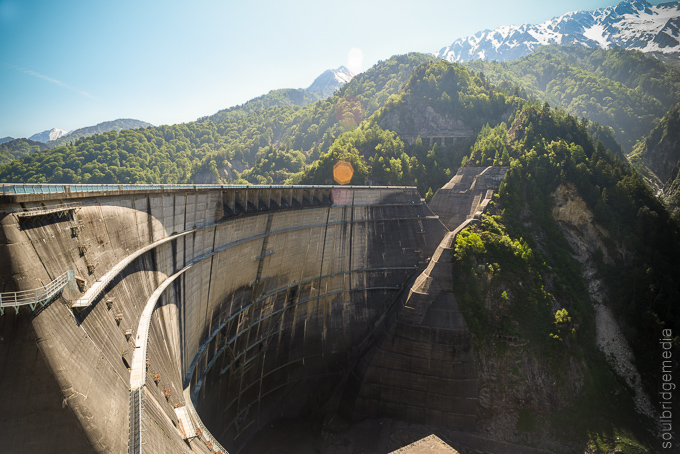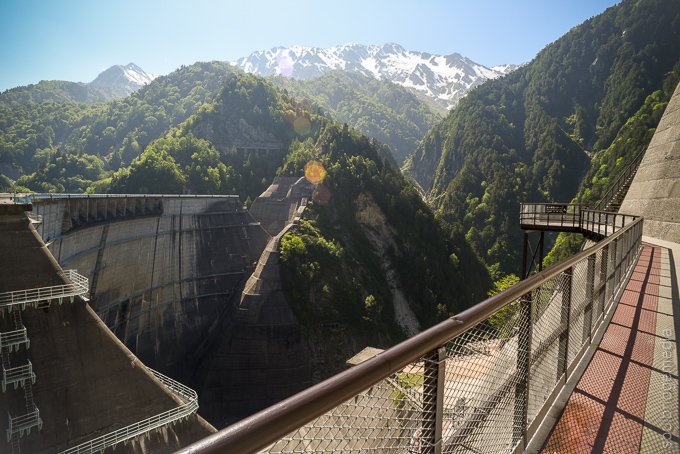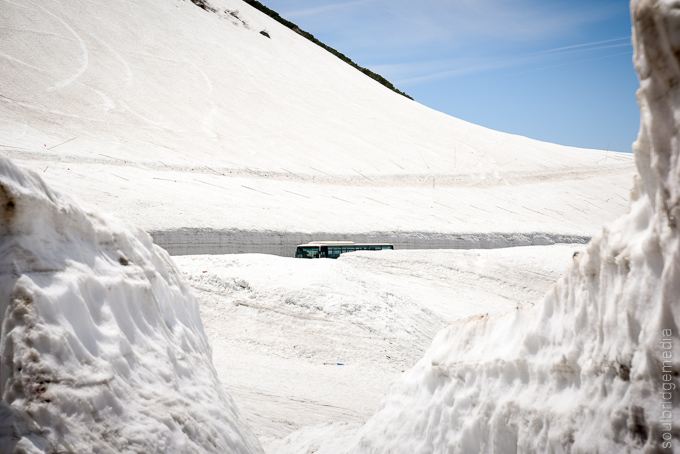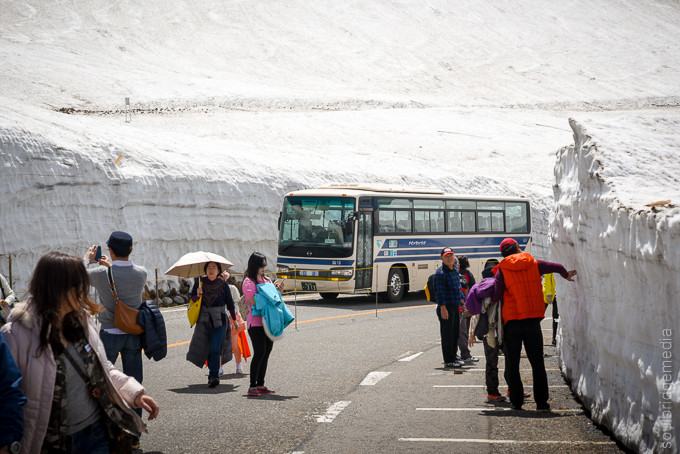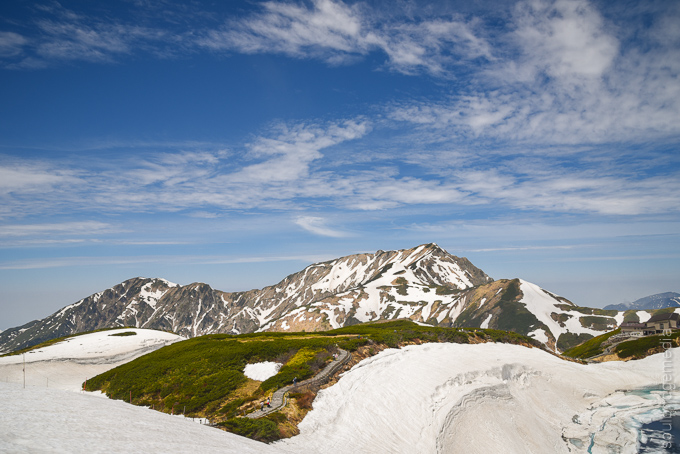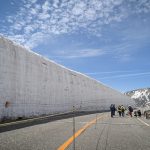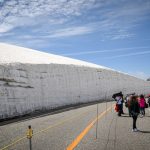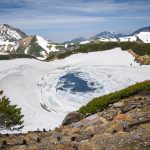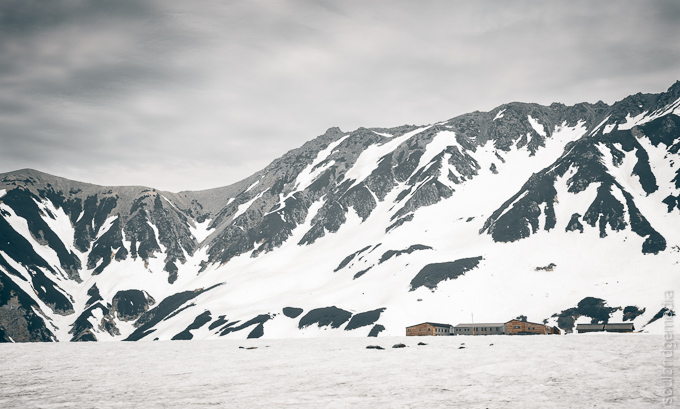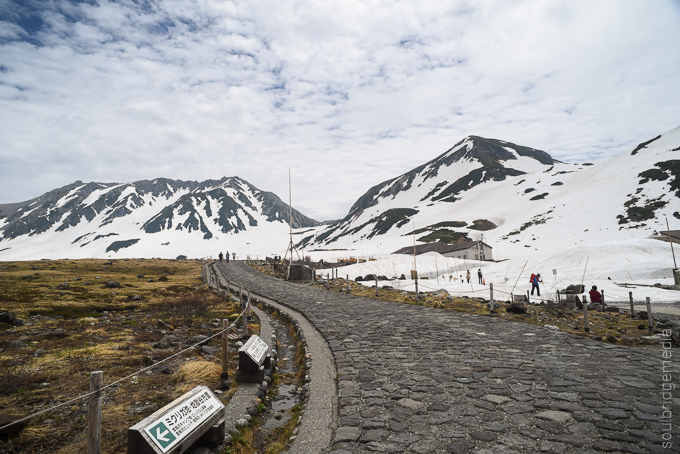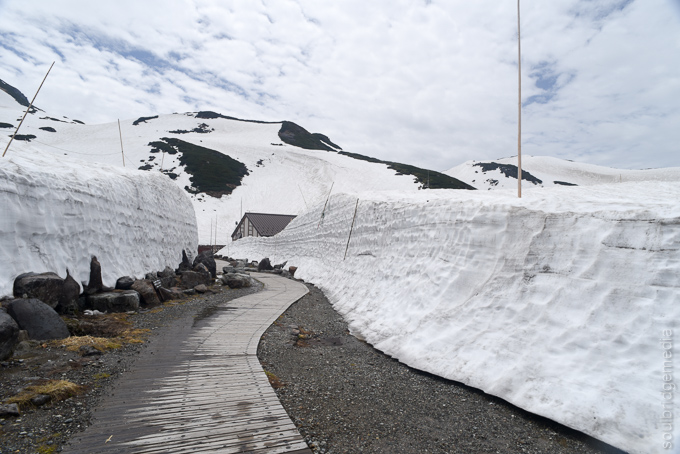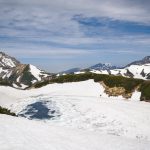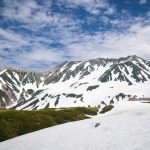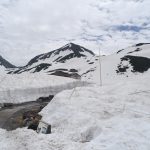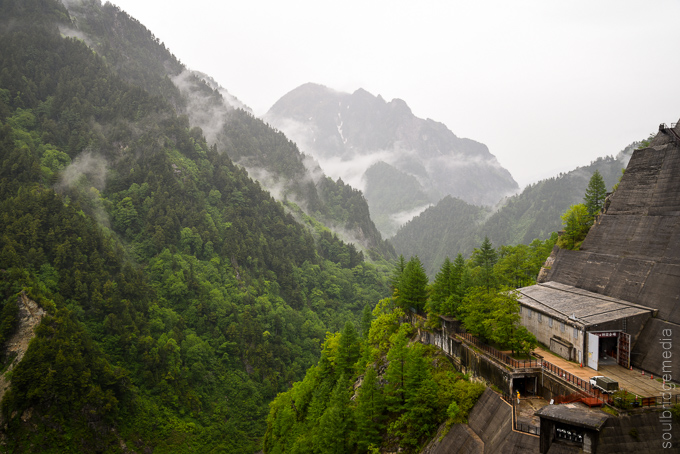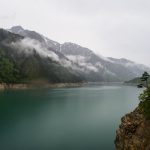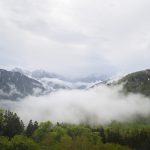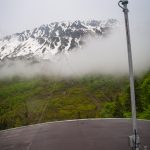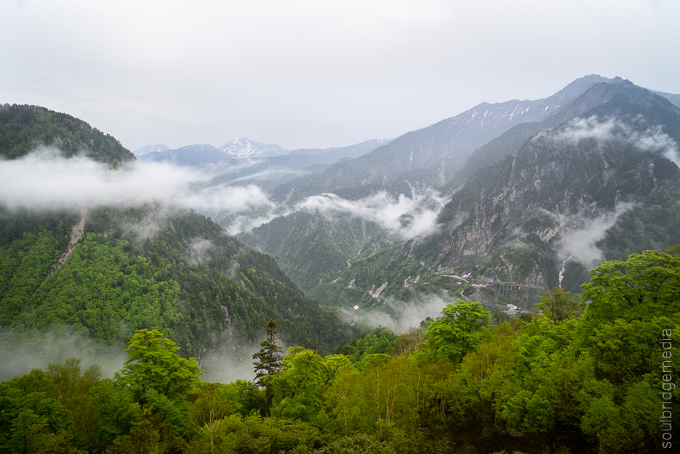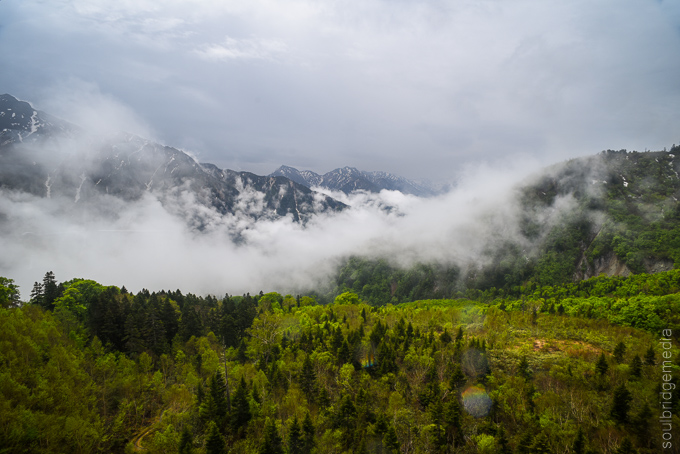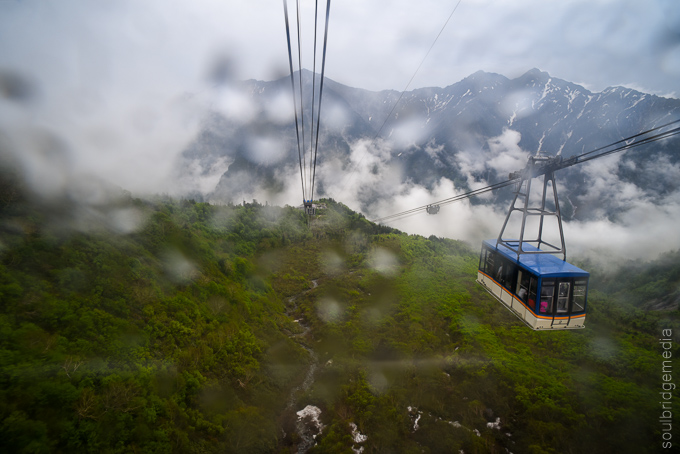Matsumoto castle
Contrasting to its surroundings, Matsumoto is reasonably flat so getting around town is an easy stroll, even easier if you hire a bicycle, but for short trips, nothing beats taking a walk through some of the alley ways as you make your way to one of the city’s main attractions, Japan’s oldest castle, Matsumoto castle. Also nicknamed Crow castle due to its black walls, it sits proudly beyond a moat with contrasting red railed bridges. Inside the grounds, you can explore the castle itself and surrounding buildings while themed samurai actors will happily pose for photos. Like most castles, it is surrounded by a lot of green space that you could easily spend a relaxing afternoon exploring and picnicking with the family.
Travel tip: Entrance fee is about 5-600Y. Got the goshuincho bug? (ink stamp collecting), there’s one before entering the grounds if you prefer to skip going into the grounds.
Travel tip: the Matsumoto time piece museum is a worthy stop if you like cogs and ticking things
Matsumoto may be over 200km from Tokyo but thanks to a direct line and an express train, you can roll into Shinjuku in about 2.5hrs.
Ashikaga Flower park
When travelling in spring its pretty much a given that a flower park is on the cards. There are plenty of public parks and gardens but if want a truly epic display you’ll need to head to a flower park. There are a few caveats though – you’ll need to pay, the large ones are out of the city and everyone else will have the same idea during the prime viewing times.
Travel tip: Trains from Shinjuku to Tomita station run regularly and take a bit under 2 hours. From Tomita station, its about a 15min walk to the park.
edit: as of 2018 there is now a Ashikaga flower park station which cuts the walk down to under 5min.
Ashikaga flower park is famed for its beautiful displays of wisteria, a hanging type flower which grows in bunches of pinks and purples, the tree itself ends up looking a little like a weeping willow. Just like the pink moss at Kawaguchiko, you can either see the wisteria in full bloom with thousands of your closest friends that you never knew you had, or you can go off peak and wander freely. Due to the timing of our trip we didn’t really have a choice but there are still plenty of other flowers to see even if the wisteria is scarce.
The huge walls and canopies set up for displaying the wisteria are impressive, even without the flowers.
Travel tip: temps can soar even on a spring day in June so pack the sunscreen or snag yourself a parasol, there is very little cover/shade.
There’s a small group of shops at the entrance selling souvenirs, groceries and snacks. Remember to check what the items are made of and if they adhere to Australian quarantine laws, and don’t forget to declare it.
Japan 2016 part #1 – Travelling with a plus one
Japan 2016 part #2 – Yokohama
Japan 2016 part #3 – Gotemba to Kawaguchiko
Japan 2016 part #4 – Fuji Shibazakura Festival and Chureito Pagoda
Japan 2016 part #5 – Fuji Q Highland
Japan 2016 part #6 – Matsumoto, Alpine Route, Snow Corridor
Japan 2016 part #7 – Matsumoto castle, Ashikaga Flower park
Japan 2016 part #8 – Tokyo Skytree, Ueno
Japan 2016 part #9 – Tokyo wandering, Odaiba + Disney Sea
Getting there:
From Kawaguchiko there are several routes but the fastest and most hassle-free trip is sticking with all trains (there are bus routes as well) to keep the luggage dragging to a minimum.
From Fuji-Q > Otsuki > Kofu > Matsumoto takes about 190mins all up.
Most of the routes out in the regions aren’t covered by the standard JR pass, if you wish to use the JR pass you’ll need one for the Kanto Area.
Kawaguchiko station timetable here
Travel tip:
As you leave the built up areas you venture out into the wide rice paddy filled country side, peppered with interesting railways and stations.
We stayed at “Hotel New Station”, a great value and perfectly located business hotel a couple min walk from the Matsumoto station.
Read the full review here.
——
Hotel New Station – Matsumoto
This hotel is definitely one of those “best bang for buck” gems and it really is close to the station. We actually walked right past it thinking it was further along having only power walked for about a minute or two (it was raining). So as usual, being this close to any major Japanese station, you have access to a whole bunch of mod cons ie. food, shopping and amenities. We didn’t bother with the hotel’s in house food service because of this, instead going with the bakeries, convenience stores and one restaurant in particular just outside the station that was so good and great valued that we ate there every day 😀 *
Being half way through our trip the clean underwear situation was getting dire so it was good to have washing machines and dryers on hand. Detergent and other personal amenities are available from reception. The double room was on the smaller side even by Japanese standards but on par for a Japanese business style hotel, with –just- enough room to have two suitcases open and room to get by them.
Contrasting to its mountainous surrounds, Matsumoto is mostly flat so its an easy walk/ride to the major attractions like the castle and the timepiece museum. There is also a large post office a couple blocks away if you need to get cash out.
We used Matsumoto as a jump off point for The Alps/snow corridor so having a close proximity to the station for those early morning starts was a big plus. The station also has direct services all the way back to Shinjuku which was also very handy.
Very pleased with our stay here, wouldn’t hesitate choosing to stay here again.
* – If you want to check it out too, turn right out of the station (don’t head out to the road) follow the row of shops, past the small fence there is a wide shop front with a big colourful sign with pictures of food. Its also next door to an ice cream shop that has a big plastic light up ice cream out the front. The restaurant has combo deals, lunch specials and speedy service which was also handy.
——————————
There’s two lots of planning you’ll need to do, getting to and from and up and down the mountains, all requiring a bit more than “she’ll be right, mate” if you’re only there for the day and want to maximise your time.
First hurdle is catching a train from Matsumoto station to Shinano Omachi station then a bus to Ogizawa which is the start of the Alpine route. Take special note of the return times if you plan on coming back late in the afternoon. The trips on multiple modes of transport up the mountain is a cross between theme park cueing and peak hour Japanese train ride kaos, thankfully the Alpine route website is very detailed with a lot of route suggestions. If you start early enough, you can take your time as there’s something to see at each station stop along the way, but of course, the two major attractions are the Kurobe dam and the Snow Corridor.
The dam, pushing close to 200m in height is the tallest in Japan. There are many vantage points around the wall and sides and if you time it right, you might even get to see them releasing some water. The route up the mountain also includes a walk through some of the tunnels which may spark claustrophobic anxiety or awaken your inner urbex-er depending on your disposition.
Speaking of tunnels, the trolley buses and funiculars are just 2 of the 7 fun and unique modes of transport that you will ride on your way up the mountain.
Once at Murodo, you have hiking fields to explore and a short walk to the snow corridor which, even at the end of the season around May-June there is still plenty of snow cover with the corridor easily towering over large buses.
The Japanese Alps are no different than other snowy mountains around the world this time of year, weather swings from warm sunshine, to showers, to haze to icy winds all in the space of an hour or two. The upside of this is, if its raining on the way up, there’s a good chance you’ll have some sun at stops on the way down. Just take a look at the photos we took of the dam, icy drizzle in the morning, sunshine in the afternoon!
Travel tip: take clothing layers you can add/shed along the way and wear waterproof shoes/boots if you want to explore the fields around Murodo. Check the live webcams in the days leading up to your trip to get an idea of what to expect.
Japan 2016 part #1 – Travelling with a plus one
Japan 2016 part #2 – Yokohama
Japan 2016 part #3 – Gotemba to Kawaguchiko
Japan 2016 part #4 – Fuji Shibazakura Festival and Chureito Pagoda
Japan 2016 part #5 – Fuji Q Highland
Japan 2016 part #6 – Matsumoto, Alpine Route, Snow Corridor
Japan 2016 part #7 – Matsumoto castle, Ashikaga Flower park
Japan 2016 part #8 – Tokyo Skytree, Ueno
Japan 2016 part #9 – Tokyo wandering, Odaiba + Disney Sea

